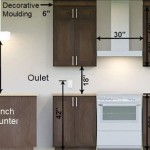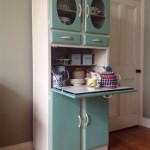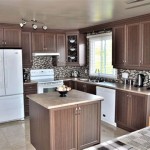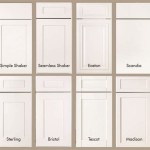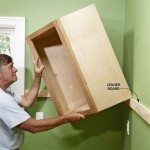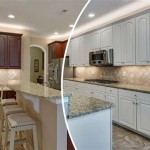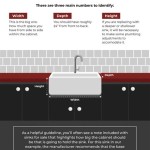Powder Coating Metal Kitchen Cabinets: A Durable and Stylish Choice
Metal kitchen cabinets have experienced a resurgence in popularity, offering a sleek, modern aesthetic and robust durability. Among the various finishing options available for metal cabinets, powder coating stands out as a superior choice due to its protective qualities, aesthetic versatility, and environmental advantages. This article will explore the benefits of powder coating metal kitchen cabinets, discussing the process, the advantages over alternative finishes, and considerations for achieving a lasting and visually appealing result.
Powder coating is an advanced method of applying a decorative and protective finish to metal surfaces. Unlike traditional liquid paint, powder coating uses a dry powder composed of finely ground particles of pigment and resin. This powder is electrostatically applied to the metal cabinet surfaces, creating an even and adherent coating. The coated cabinets are then cured under heat, causing the powder to melt and fuse into a smooth, durable finish.
The initial appeal of metal kitchen cabinets often lies in their inherent strength and resistance to wear and tear. Choosing powder coating as the finishing method further enhances these qualities, providing an additional layer of protection against common kitchen hazards.
Enhanced Durability and Resistance
The durability of powder coating is a significant advantage, particularly in a high-use area like the kitchen. Metal cabinets finished with powder coating exhibit superior resistance to scratches, chipping, fading, and corrosion compared to those finished with liquid paint. This resistance stems from the curing process, which creates a hard, cross-linked polymer layer that is remarkably resilient.
Kitchen environments are often exposed to moisture, grease, and cleaning agents. Powder-coated metal cabinets are inherently more resistant to these elements. The sealed, uniform layer created by the powder coating process prevents moisture from penetrating the metal, mitigating the risk of rust and corrosion. Spills and splatters can be easily wiped clean without damaging the finish, ensuring the cabinets maintain their appearance over time.
Furthermore, the impact resistance of powder coating is considerably higher than that of wet paint. Accidental bumps and scrapes are less likely to leave lasting marks, preserving the integrity and aesthetic appeal of the cabinets. This durability translates to a longer lifespan for the cabinets, reducing the need for frequent repairs or replacements.
For homeowners seeking a low-maintenance kitchen solution, powder-coated metal cabinets are a practical choice. The durable finish requires minimal upkeep and retains its appearance even under demanding conditions. This resistance to daily wear and tear contributes to the long-term cost-effectiveness of powder coating.
Aesthetic Versatility and Design Options
Beyond its protective qualities, powder coating offers a wide range of aesthetic possibilities, allowing for the creation of visually appealing and customized kitchen spaces. The availability of countless colors, textures, and gloss levels enables homeowners and designers to achieve a specific look and feel.
Color selection is virtually unlimited with powder coating. Custom color matching services can precisely replicate any desired shade, ensuring the cabinets seamlessly integrate with the overall kitchen design. From vibrant and bold hues to subtle and neutral tones, the possibilities are extensive.
In addition to color, powder coating allows for the incorporation of various textures. Smooth, glossy finishes offer a contemporary and sleek appearance, while textured finishes can add depth and visual interest. Options such as matte, satin, and hammered finishes provide a range of tactile and visual experiences.
Specialty effects, such as metallic and pearlescent finishes, can also be achieved with powder coating. These effects can create a luxurious and high-end aesthetic, adding a touch of sophistication to metal kitchen cabinets. The versatility of powder coating allows for experimentation with different design styles and the creation of unique and personalized kitchen environments.
The uniformity of the powder coating application ensures a consistent color and texture across all cabinet surfaces, contributing to a cohesive and professional look. Unlike liquid paint, which can be prone to drips, runs, and uneven coverage, powder coating provides a flawless and consistent finish.
Environmental Benefits and Sustainability
In an era of increased environmental awareness, the environmental benefits of powder coating are a compelling advantage. Compared to traditional liquid painting, powder coating is a more sustainable and eco-friendly finishing option.
The powder coating process emits negligible volatile organic compounds (VOCs). VOCs are harmful pollutants that contribute to air pollution and can pose health risks. The absence of VOCs in powder coating makes it a cleaner and safer alternative to liquid paint.
Overspray from powder coating can be collected and reused, minimizing waste. Unlike liquid paint, which often generates significant amounts of waste, powder coating is a highly efficient process. The ability to recycle overspray reduces material consumption and minimizes environmental impact.
The durability of powder coating contributes to its sustainability. By extending the lifespan of metal kitchen cabinets, powder coating reduces the need for frequent replacements, conserving resources and minimizing waste generation. Durable cabinets translate to a lower environmental footprint over time.
Furthermore, the energy efficiency of the powder coating process is noteworthy. The curing process is typically more energy-efficient than the drying process for liquid paint, reducing energy consumption and associated greenhouse gas emissions. The combination of low VOC emissions, waste reduction, and energy efficiency makes powder coating a more environmentally responsible choice for finishing metal kitchen cabinets.
Choosing powder-coated metal cabinets aligns with sustainable building practices and reflects a commitment to environmental responsibility. The long-term durability and low maintenance requirements of the finish further contribute to its overall sustainability profile.
The selection of appropriate metal substrates is crucial for ensuring the longevity and performance of powder-coated kitchen cabinets. Common materials such as steel and aluminum are well-suited for powder coating, each offering distinct advantages.
Steel cabinets provide exceptional strength and durability, making them ideal for heavy-duty use. Steel's inherent resistance to impact and its ability to withstand significant weight loads make it a popular choice for kitchen cabinets. Properly prepared steel surfaces readily accept powder coating, creating a strong bond and a lasting finish.
Aluminum cabinets offer a lightweight and corrosion-resistant alternative to steel. Aluminum's natural resistance to rust makes it particularly well-suited for kitchens where moisture exposure is a concern. Aluminum is also easier to work with than steel, allowing for more intricate designs and customization options. Powder coating enhances the aesthetic appeal of aluminum cabinets while providing additional protection against scratches and wear.
The preparation of metal surfaces before powder coating is critical for achieving optimal adhesion and finish quality. Proper surface preparation ensures that the powder coating bonds effectively to the metal, preventing peeling, chipping, and other defects.
The surface preparation process typically involves cleaning the metal to remove any contaminants, such as oil, grease, dirt, and rust. Various cleaning methods can be used, including solvent cleaning, abrasive blasting, and chemical etching. The choice of cleaning method depends on the type and extent of contamination.
After cleaning, the metal surface is often treated with a conversion coating, such as phosphate or chromate. Conversion coatings improve adhesion by creating a chemically active surface that promotes bonding between the metal and the powder coating. These coatings also enhance corrosion resistance.
The electrostatic application of powder coating is a precise process that requires careful attention to detail. Properly grounded metal cabinets are charged with an electrical potential, while the powder is given an opposite charge. This electrostatic attraction causes the powder to adhere evenly to the cabinet surfaces.
The thickness of the powder coating layer is an important factor in determining its durability and performance. The optimal thickness varies depending on the specific application and the desired level of protection. Thicker coatings generally provide greater resistance to scratches and corrosion, while thinner coatings may offer better flexibility.
The curing process is the final step in powder coating, transforming the dry powder into a durable and long-lasting finish. The coated cabinets are placed in an oven and heated to a specific temperature for a set period. This heat causes the powder to melt, flow, and fuse together, creating a uniform and cross-linked polymer layer.
The curing temperature and time are critical parameters that affect the properties of the powder coating. Insufficient curing can result in a soft and brittle finish, while excessive curing can lead to discoloration and cracking. Following the manufacturer's recommendations for curing is essential for achieving optimal results.
Powder-coated metal kitchen cabinets represent a durable, aesthetically versatile, and environmentally conscious choice for modern kitchens. The superior resistance to wear and tear, the wide range of design options, and the minimal environmental impact make powder coating a compelling finishing solution for metal cabinets.

Benefits Of Powder Coating Outdoor Kitchens Cabinets

Benefits Of Powder Coating Kitchen Cabinets For The Outdoors

Powder Coating Steel Kitchen Cabinets Todd S Story And Beautiful Results Retro Renovation

Sam Has A Great Experience With Powder Coating Her Vintage Steel Kitchen Cabinets Retro Renovation Metal Design Small

Sam Has A Great Experience With Powder Coating Her Vintage Steel Kitchen Cabinets Retro Renovation Turquoise Cabinet Remodel Metal

Outdoor Kitchen Finishes Trex Kitchens

Sam Has A Great Experience With Powder Coating Her Vintage Steel Kitchen Cabinets Retro Renovation Cabinet Remodel Aluminum

Industrialex Colorado Springs Powder Coating Oink

Steel Kitchen Cabinets 4 Places To Buy Them Made New Today Retro Renovation

Residential Powder Coated Steel Modular Kitchen Warranty 1 5 Years
Related Posts

